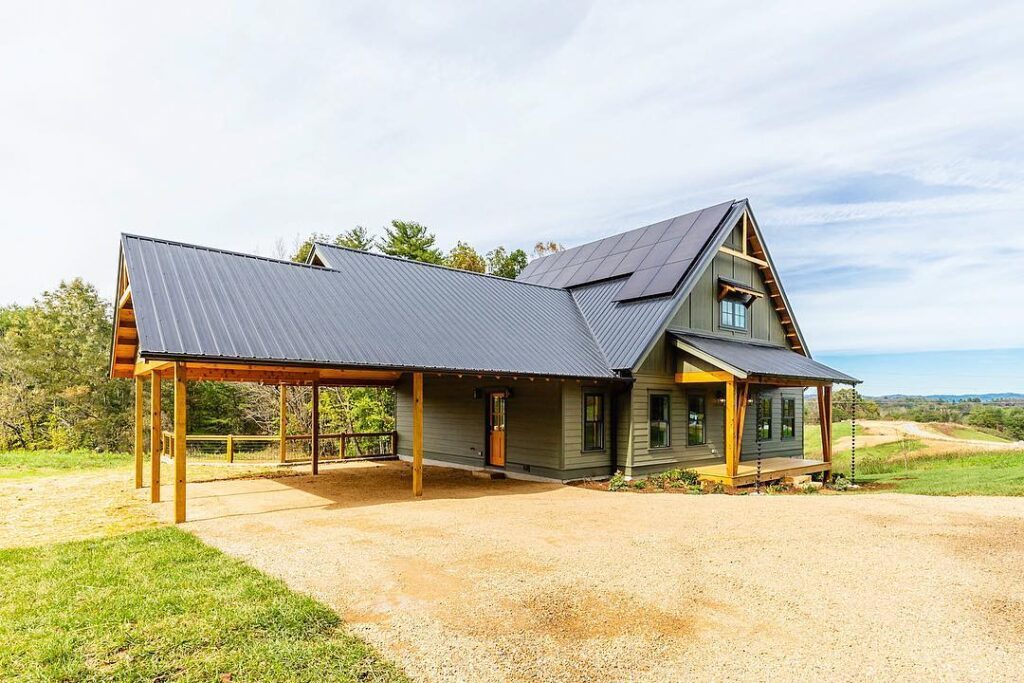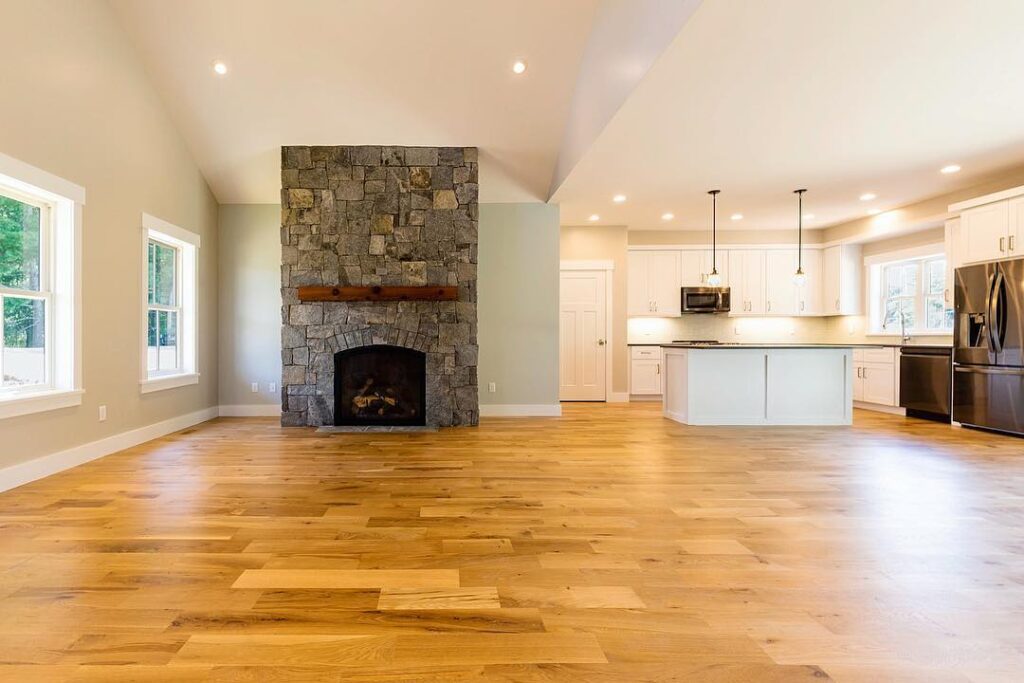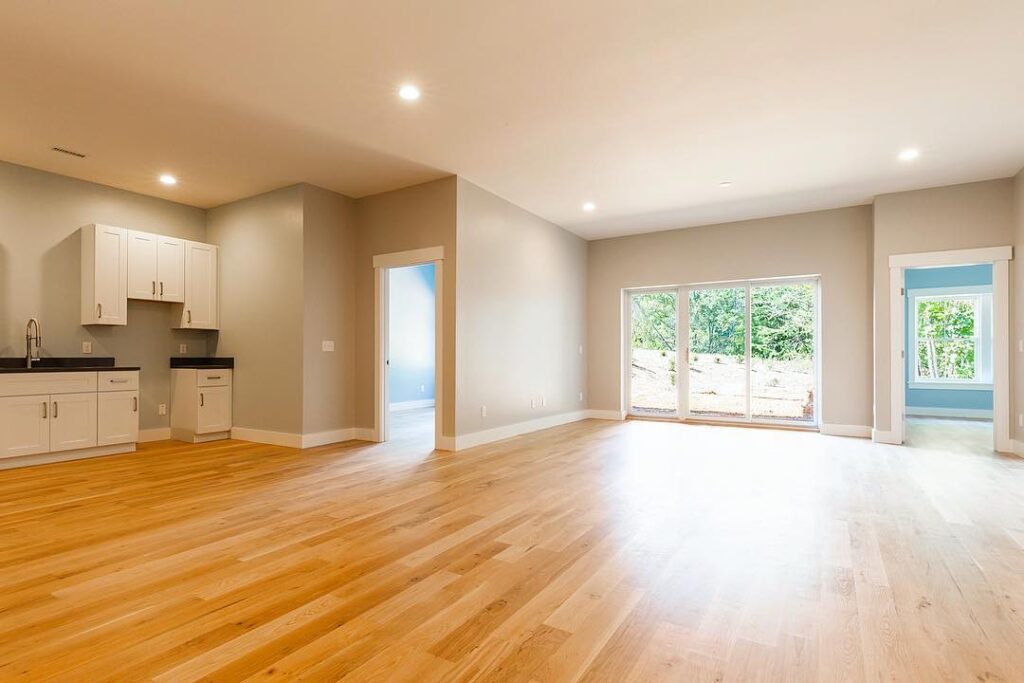My wife Deb and I moved to Asheville in 2003 with the dream of building green homes around a farm. At the time, green building was a new concept and investors were wary. Having grown up on a farm, I wanted to preserve land, but most investors thought the idea of keeping a working farm within a residential development was insane.
Synchronicity led us to buy the first ENERGY STAR®-certified house in Buncombe County. We thought this would be a temporary home while we looked for the perfect place to build. Little did we know how long our journey would be.

Around the same time, Green Built Alliance—then known as the Western North Carolina Green Building Council—was developing a certification program for green homes, which came to be known as Green Built Homes. By providing education to builders, Realtors and homeowners, this program moved green homes into the local spotlight. A few infill projects and surrounding suburban developments began requiring that all houses be certified, and some land was being placed in conservation.
Over the course of the next 16 years, Deb and I viewed developments and houses, which offered many good features yet were always lacking in some way.
When I heard of the 346-acre community being planned around a historic farm at Olivette, I was excited by their master plan. I was also dubious, in knowing the reality of what it would take to create a planned community that required a Home Energy Rating System (HERS) Score of 55, geothermal, and a list of environmental requirements, plus included a working farm. Finally, an agrihood community was being created!

I started taking my real-estate clients to Olivette and became more impressed with the master plan and the developer’s commitment. After helping some clients buy lots, I decided to take Deb to see it in January of 2018. She immediately loved it.
During the next few months, we walked the land, visualized what life would be like and dreamed of the perfect house. By April, we were under contract for the first house on the community’s farm side, known as Westridge Hamlet.
A local builder had created land-home package deals. All homes had to be Green Built Homes certified, featuring a modern farmhouse with open floor plans. This made the building process so much easier. We knew from the start that our house would have the internal sustainable and energy-efficient features that are so important.
The foundation was made of insulated precast concrete wall panels that provide a home with an excellent thermal envelope, minimizing the potential for energy leakage.
The development requires geothermal for all homes. A geothermal heat pump uses the earth all the time, without any intermittency, as a heat source in the winter and a heat sink in the summer. This design takes advantage of the moderate temperatures in the ground to boost efficiency and reduce the operational costs of heating and cooling systems.
Heat pump water heaters use electricity to move heat from one place to another instead of generating heat directly. Therefore, they can be two to three times more energy efficient than conventional electric resistance water heaters. To move the heat, heat pumps work like a refrigerator in reverse.
A desuperheater is a small, auxiliary heat exchanger that uses superheated gases from the heat pump’s compressor to heat water. This hot water then circulates through a pipe to the home’s storage water heater tank.
A feature we enjoy is that the heat pump water heater also acts like a dehumidifier and instead of turning the air conditioning to a lower number, we open the mechanical room.

Our appliances are ENERGY STAR® and our water fixtures and toilets are WaterSense. All lighting fixtures use LEDs.
Once we had maximized our energy-efficiency selections, it was time to think about solar power. We discussed whether to get back-up batteries right away or to wait. Two factors caused us to wait: first, if we got batteries immediately, then we would not receive the rebate from the local electric company, and second, technology is currently progressing so quickly that batteries installed today may be obsolete in a few years. We decided to wait on batteries and go with a 7.7 kW solar array. The panels are solid black and almost invisible on our black metal roof.
Indoor air quality was an important consideration for us. We already knew we would have fresh-air filtration and that all glues, stains and paints would be low or zero VOC. We also decided to use AirRenew, a new drywall product that absorbs formaldehyde and converts it into a safe inert compound.
We only had to make one emotional decision and fortunately, science helped influence my wife. Deb is a fabulous cook and enjoys cooking on a gas range. We were aiming for a low HERS Score and decided to go with a convection/induction range. (Deb is now in chef heaven.)
Our aim was to create the greenest home possible. We are delighted to brag that our home landed at a HERS Score of 1, achieved Green Built Homes’ Platinum Net Zero level of certification, and won the Asheville Home Builders Association’s Green Certification Award in its 2018 Parade of Homes.
We recently moved into our new home. We are enjoying all the designed comforts and the ability to walk our dogs on numerous trails every day.
When I wake up in the morning, I sit in my rocking chair, enjoying the features of my new home, and then look out my window to see a working farm that I’m part of.
It was so worth the wait. Deb and I held our vision for 16 years. We are deeply grateful for everyone who made our dream come true.
Mary Love has been living and teaching the green life for so long that she has affectionately been called the “Grandmother of Green.” Her love for nature and sustainability naturally developed from her early years growing up on a farm. Mary is president of Love The Green real-estate consulting firm. Connect with Mary at lovethegreen.org.
You can also view this article as it was originally published on pages 14-15 of the 2019-2020 edition of the directory.

